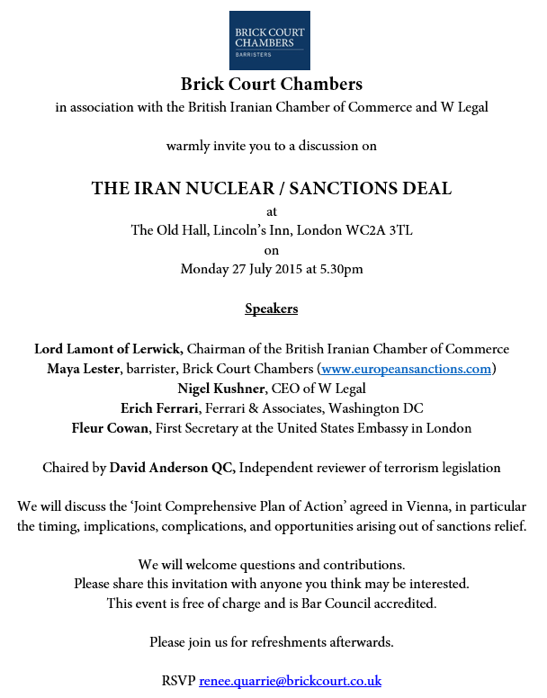Iran Sanctions Roadshow, 2016 Tour
Following passage of the Comprehensive Iran Sanctions Accountability and Divestment Act (“CISADA”), senior officials from the U.S. Department of the Treasury undertook a three-week-plus tour of the world in which foreign banking officials were cautioned over engaging their Iranian counterparts as a result of the potential scope of the newly-imposed sanctions on Iran. As a result of this prolonged tour, most foreign financial institutions limited – if not severed – their connection with Iranian banks in order to avoid the compliance risks in dealing with Iranian parties.
This tour is cited as one of success. Dedicating enormous resources to cutting Iran off from the global financial system, the U.S. Treasury Department was able to provoke enough fear in foreign banks so as to achieve its ultimate purpose of isolating Tehran.
Soon after implementation of the nuclear accord between the U.S., other major world powers, and Iran, questions arose as to whether the Obama administration would engage in a similar tour to explain the rules of the road regarding Iran sanctions and to facilitate legitimate business activities with Iran that had hitherto been prohibited. Considering the fear of foreign parties in dealing with Iran and falling afoul of surviving U.S. sanctions, some (such as this author) believed that there needed to be a bit of hand-holding to help foreign parties recognize the new commercial opportunities opened as a result of the Iran deal.
According to a Financial Times report, the United States is indeed engaged in such a “roadshow”. The FT report indicates that “U.S. officials are touring the world to host informal roadshows where they help businesses understand the maze of Iran sanctions…” Most recently, “a number of roadshow-style events took place last month,” where the U.S. State Department’s Principal Deputy Coordinator for Sanctions Policy Chris Backemeyer led meetings with foreign business to help them understand the scope of surviving U.S. sanctions and the ways in which firms can take advantage of trade openings with Iran.
Not surprisingly, these roadshows have been specifically dedicated to “clarifying how financial transactions [can] be carried out by non-U.S. financial institutions with Iranian clients.” The reluctance of major foreign banks to reconnect with their Iranian counterparts has had the effect of inhibiting most transactions with Iran. If the banks don’t move to re-engage Iran, not much else will be able to do so.
The FT report also notes that “the most common question” raised in the meetings with U.S. officials “concerned the level of due diligence that foreign companies would have to carry out to protect themselves from legal action and fines.” That is a question that U.S. officials have thus far refused to answer, alleging that the level of due diligence expected is dependent on the kinds of parties and transactions in which the foreign business is engaged in Iran. As I have noted, however, absent a checklist and a roadmap, foreign firms are likely to remain hesitant to deal with Iran for fear of incurring sanctions penalties.
What does this all mean, then? It signals that the U.S. is making a dedicated effort to ensuring that Iran receives practical value from the sanctions-lifting under the JCPOA. As Secretary Kerry said on Tuesday, “Iran deserves the benefits of the agreement they struck.” Whether the roadshows will be enough, though, is unclear: I think not; and that means that the U.S. will have to take additional action — including additional sanctions-lifting — to instill the requisite confidence in foreign business so that they are able to take advantage of new commercial opportunities with Iran without risking trouble from U.S. sanctions.



